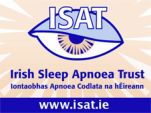Snoring and Obstructive Sleep apnoea
Snoring is the sound of partially obstructed breathing during sleep. While snoring can be harmless, it can also be the sign of a more serious medical condition known as Obstructive Sleep apnoea (OSA). OSA occurs when the tongue and soft palate collapse onto the back of the throat, which completely blocks the airway and restricts the flow of oxygen. The condition known as Upper Airway Resistance Syndrome (UARS) is midway between primary snoring and true Obstructive Sleep apnoea. People with UARS suffer many of the symptoms of OSA, but normal sleep testing may be negative.
Treatment Options
In addition to good sleep hygiene, exercise and weight loss, there are three primary methods to treat snoring and sleep apnoea. The most common method is therapy involving a Continuous Positive Air Pressure Machine. CPAP is usually applied through a tube to a mask that covers the nose. The air pressure that is generated, splints the structures in the back of the throat, holding the airway open during sleep. Treatment may also be accomplished through Oral Appliance Therapy. Oral appliances that treat snoring and obstructive sleep apnoea are small plastic devices, worn in the mouth, similar to orthodontic retainers or sports mouth guards. These appliances help prevent the collapse of the tongue and soft tissues in the back of the throat, keeping the airway open during sleep and promoting adequate air intake. Treatment can also be accomplished with surgery to the soft palate, uvula, and tongue to eliminate the tissue that collapses during sleep. More complex surgery can reposition the anatomic structure of your mouth and facial bones. Many of these procedures can be performed by an AADSM member trained as an oral and maxillofacial surgeon. There are many surgical procedures available, some of which are detailed below.
Oral Surgery treatment options
In general, oral surgery is indicated when the other therapies are non-applicable, unsuccessful, or intolerable. Surgery may be an effective treatment for snoring and OSA, but only if performed on the correct portions of the upper airway. Surgery is “site-specific” meaning it requires the identification of specific anatomic areas contributing to airway obstruction. This may vary from patient to patient. A detailed examination of the entire upper airway is necessary before deciding which surgical procedures may be most effective.
Maxillomandibular Advancement (MMA)
Maxillomandibular Advancement involves osteotomies (bony cuts performed via intraoral incisions) to advance the upper and lower jaws to pull forward and tighten the soft palate, tongue and other attached soft tissues. This process enlarges and stabilizes the entire upper airway. MMA is the most effective and acceptable surgical treatment of OSA. MMA has published success rates ranging from 94 to 100 percent. An overnight hospital stay is required, and the jaws may be wired shut for several weeks, which may result in weight loss.
Anterior Inferior Mandibular Osteotomy (AIMO) with hyoid suspension
The AIMO involves a chin bone osteotomy for advancement of the genial tubercles to pull forward the attached tongue and hyoid (the U-shaped bone in the anterior neck) muscles to enlarge and stabilize the airway behind the tongue base. Although not as effective as MMA, the jaws do not have to be wired shut and there is no change in bite. AIMO may be performed solely as an outpatient procedure or in combination with MMA and other procedures.
Surgery of the soft palate
There are many soft-palatal operations that may be effective for snoring, such as Upper Airway Resistance Syndrome (UARS) and Obstructive Sleep apnoea ( OSA).Possible adverse side effects of the soft palatal surgery include throat swelling , nasal reflux of air during speech and fluid during drinking.Throat swelling usually occurs immediately after surgery. The most commonly performed procedure is an Uvulopalatopharyngoplasty (UPPP), which involves trimming of a bulky soft palate, often performed in combination with removal of enlarged tonsils and/or adenoids. A Laser-Assisted Uvuloplasty (LAUP) is a modified UPPP that involves “scarring†cuts to tighten the soft palate and sequential trimming of the uvula over several appointments. While LAUP is less painful and has fewer side effects, it is less effective than UPPP in the treatment of OSA. Radiofrequency Volumetric Tissue Reduction (RFVTR), sometimes called Somnoplasty,, attempts to shrink the soft palate and tongue base using energy waves, similar to microwaves.
Nasal Surgery
Nasal obstruction may be treated by surgical procedures, including Septoplasty, to straighten a deviated septum, and Turbinate Reduction, to remove or reduce large turbinates and polyps. While these procedures may be performed independently as outpatient procedures, they are often used in combination with other procedures to treat snoring and OSA.
Tongue reduction surgery
This procedure involves a wedge-shaped surgical reduction of the tongue base. It is not typically performed to treat OSA and may have many potentially adverse side effects.
Weight reduction surgery
Bariatric surgery, such as gastric bypass, may be indicated as a last resort treatment of morbidly obese patients with OSA.Cervicofacial Liposuction is a relatively safe procedure that selectively removes excessive fatty tissue below the chin and anterior neck to reduce the weight against underlying soft tissues. It also helps minimize airway collapse behind the tongue base. It is usually used in combination with other surgical procedures.
Tracheostomy
This operation bypasses the entire upper airway by creating an opening in the larynx, or windpipe. Although having the highest therapeutic efficacy for OSA, tracheostomy has many psychosocial problems and is typically reserved as a last resort for the treatment of severe OSA.Tracheostomy is particularly beneficial for patients with complicated medical conditions that prevent other above-listed surgical procedures.
Currently, there is no single universal effective and tolerable treatment for sleep-related breathing disorders. Therefore, sleep medicine requires an interdisciplinary approach partnering physician and dentist for the management of snoring, UARS and OSA.





